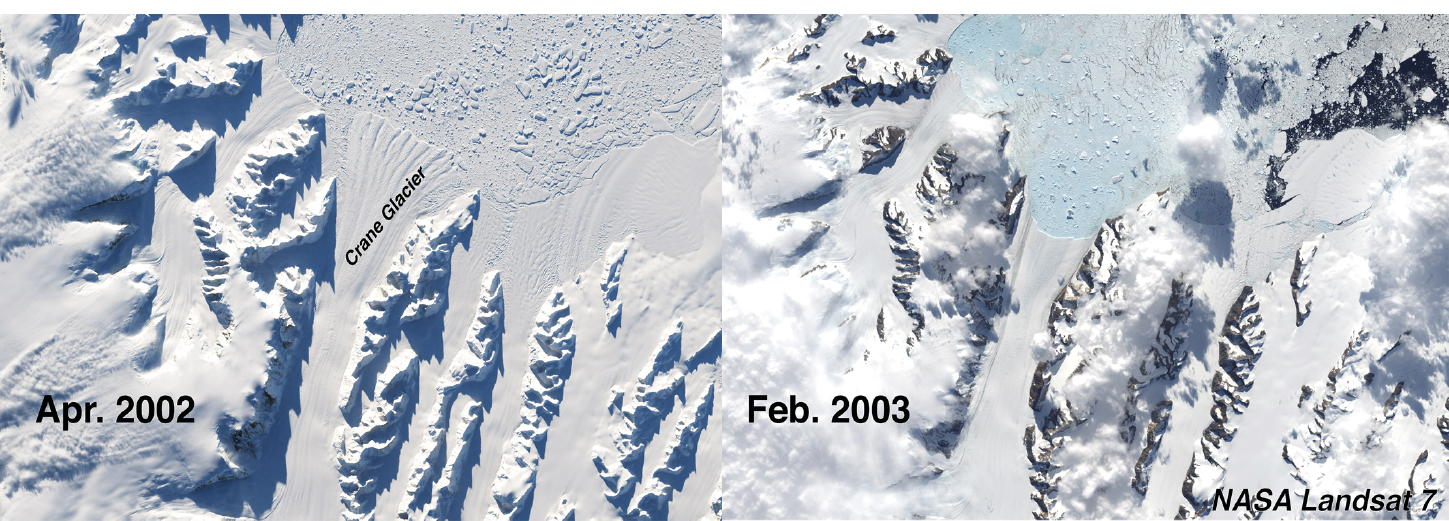- Home
- Publications
- PAGES Magazine
- Paleo Sea-level Science Is Advancing Through Earth- and Ice-process Insights, But Key Questions Linger
Paleo sea-level science is advancing through Earth- and ice-process insights, but key questions linger
Gilford DM, Coulson S & Alvarez VC
Past Global Changes Magazine
28(2)
67
2020
Daniel M. Gilford1, S. Coulson2 and V. C. Alvarez3
PALSEA Express virtual meeting, 15-16 September 2020
Unconventional and historic, the first-ever virtual PALeo constraints on SEA level rise (PALSEA; pastglobalchanges.org/science/wg/palsea/intro) Express workshop (pastglobalchanges.org/calendar/2020/127-pages/2043) was held in September, fostering valuable scientific exchanges among new and established community members. Eight invited speakers, 23 poster presenters, and a record number of over 200 attendees focused on improving their understanding of ice-sheet and solid-Earth processes that drive paleo sea-level change.
A new compilation of Northern Hemisphere (NH) ice-sheet extent through the Quaternary (Batchelor et al. 2019) showed key spatial differences in ice-sheet configurations between glacial cycles, emphasizing the ongoing need to gather new field evidence and constrain past ice-sheet extents for modeling study support. Data standardization and consolidation has been a core goal of the PALSEA community over the last decade. Workshop presentations promoted open and accessible data and methods, highlighting the growing number of tools and databases available to the community, and their usefulness. One talk, for example, illustrated the importance of sea-level databases for assessing coastal environment vulnerability (Horton et al. 2019).
The uncertain fate and historical evolution of the Antarctic Ice Sheet (AIS) was an overarching theme of the meeting. The AIS is strongly coupled with the surrounding Southern Ocean, driving important ice-ocean interactions which feed back on AIS stability. Several invited talks considered the physical mechanisms controlling this stability, including brittle ice-sheet processes and feedbacks between meltwater pulses, ocean stratification, and basal AIS melt. An improved ice-sheet model capturing hydrofracturing and calving of marine-terminating ice shelves (e.g. observed Crane Glacier retreat over 2002–2003, Fig. 1) suggested more Last Interglacial (LIG) AIS retreat than previously thought, bringing LIG global mean sea-level estimates closer to (though not fully reconciling them with) those from observed sea-level indicators. A report from the WArm Climate Stability of West Antarctic ice sheet in the last INterglacial (WACSWAIN; https://www.esc.cam.ac.uk/research/research-groups/wacswain) field campaign outlined critical ongoing efforts to document LIG AIS extent with >600-m ice cores.
 |
|
Figure 1: The stunning retreat of Crane Glacier (West Antarctica) following ice-shelf crevassing and collapse in 2002 (NASA; https://earthobservatory.nasa.gov/images/43459/retreat-of-crane-glacier-antarctic-peninsula). |
Coupled sea-level ice-sheet models demonstrated the considerable influence that NH ice-mass changes can have on AIS variability (Gomez et al. 2020). Dramatic melting of NH ice sheets during the most recent deglaciation (~14,000–10,000 years ago) led to geographically variable sea-level rise around Antarctica, driving increased AIS mass losses (since flux across the grounding line is proportional to water height), and may have affected AIS stability during the Holocene and LIG. Additional insights from glacial isostatic adjustment (GIA) models and the incorporation of 3D Earth structure were central themes of the virtual poster session.
Advances by the paleo sea-level community also raised old questions. Several presentations built on John Mercer's classical paper (1968), suggesting LIG sea-level highstands could inform future sea-level rise. However, LIG peak sea level remains elusive, with recent estimates showing little change from the 6–9 m estimated by a landmark review five years ago (Dutton et al. 2015). Combining evidence from Bahamian coral terraces, GIA models, and a machine-learning technique, one speaker suggested LIG peak sea level could have been as low as 1.1 m (Dyer et al. in review in Sci Adv), bringing previous higher estimates into question. Other challenges discussed were the relative timing of Antarctic and Greenland ice-sheet retreat during deglacial periods, the role of spatially varying mantle viscosity in ice-sheet stability, and whether certain sea-level indicators can be considered eustatic.
The virtual nature of the workshop encouraged broader academic diversity, including participants from 34 different countries. Removing financial and travel barriers noticeably increased participation and involvement from early-career researchers. Attendees highlighted the impact of the pandemic and political and racial unrest on the paleo sea-level science community, and in particular the need to support young scientists. Discussions also emphasized the paramount importance of diversifying our community moving forward and supporting initiatives such as #BlackInGeoscienceWeek. We hope PALSEA Express 2020 was the first of many such successful virtual meetings.
Acknowledgements
Many thanks to workshop organizers Jacky Austermann, Alexander Simms, Natasha Barlow, Jeremy Shakun, and Alessio Rovere, and to the many institutions that provided Zoom access throughout the virtual meeting. We also thank PAGES, the International Union for Quaternary Research (INQUA), and the Scientific Committee on Antarctic Research Solid Earth Response and influence on Cryospheric Evolution program (SCAR-SERCE) for their support.
Affiliations
1Institute of Earth, Ocean, and Atmospheric Sciences, Rutgers University, New Brunswick, NJ, USA
2Department of Earth and Planetary Sciences, Harvard University, Cambridge, MA, USA
3School of Earth and Environment, University of Leeds, UK
contact
Daniel M. Gilford: daniel.gilford rutgers.edu
rutgers.edu
references
Batchelor CL et al. (2019) Nat Commun 10: 3713
Dutton A et al. (2015) Science 349: aaa4019
Gomez N et al. (2020) Nature 587: 600-604
